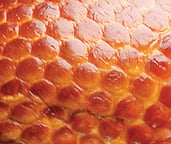 Next time you are in the grocery store, walk over to the deli counter and look at the patterns on the meats. Some meats have square patterns, some rectangles or other shapes. And some of the meats have no pattern at all.
Next time you are in the grocery store, walk over to the deli counter and look at the patterns on the meats. Some meats have square patterns, some rectangles or other shapes. And some of the meats have no pattern at all.
But whether you can see a pattern or not, almost all of these meats were made with some type of net.
Food netting, particularly meat netting, is an essential step in meat processing, giving meat its characteristic pattern, shape and even colors. Netting comes in all shapes and sizes, and selecting the right net can be challenging. So Flavorseal’s netting product manager, Dave Wince, put together some common questions and answers that can help get the process started.
How many types of netting for processing? For processing, there are really on two different types of netting: an open weave net (net that has an open pattern) and tight weave nets (net with a closed pattern and that look more like a fabric). Each of these types has multiple options in terms of material, pattern, size, releases, smokes, and color.
What are these nets made of? Open weave nets can be made of polyester, cotton or a poly cotton blend. Open weave nets can also come with an an elastic filament surrounded by the fiber. Tight weave nets are generally only available in a polyester or poly cotton blend. All of the materials used in processing nets are safe for food contact.
 What other options are there? Pattern is the big one. Patterns can be very important to conveying a particular look that customers expect, or making something more eye-catching in the deli counter. While traditional patterns are squares, diamonds or rectangles, processors have been exploring other options as well.
What other options are there? Pattern is the big one. Patterns can be very important to conveying a particular look that customers expect, or making something more eye-catching in the deli counter. While traditional patterns are squares, diamonds or rectangles, processors have been exploring other options as well.
What about the other options you mentioned – releases, smokes or colors? Netting release agents can be applied to the net at Flavorseal, or as part of the processing step at the plant. Smokes, like hickory or mesquite, add the smoky flavor to the net that is transferred to the protein during processing. Colors are also available.
How would a customer know which one to use ? Different nets do different things. The application and the way the protein is processed determine which type of net should be used. For example, what is the desired size and shape of the protein? Will the net be hand stuffed or machine stuffed? What type of protein is being processed. All of these are important factors to selecting the right processing net.
So where should a processor start? Processing net isn’t a one size fits all selection process. Processors really need to take the time to understand the whole process and what the end goal is. Once you understand that, then talk to a Flavorseal rep who can help identify the appropriate netting to meet your packaging goals.


